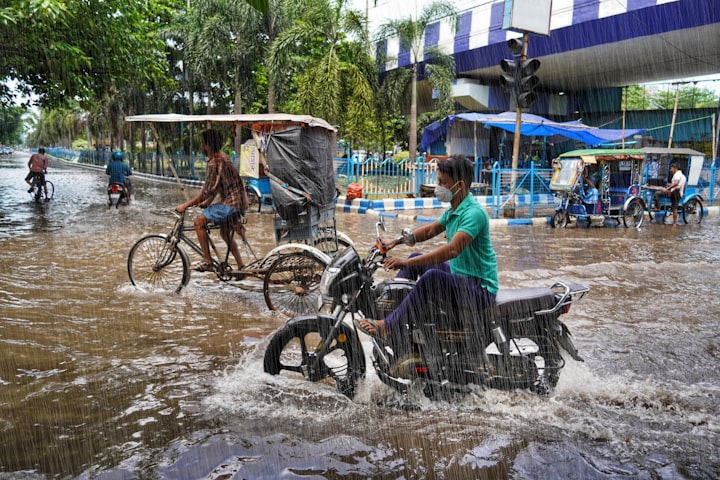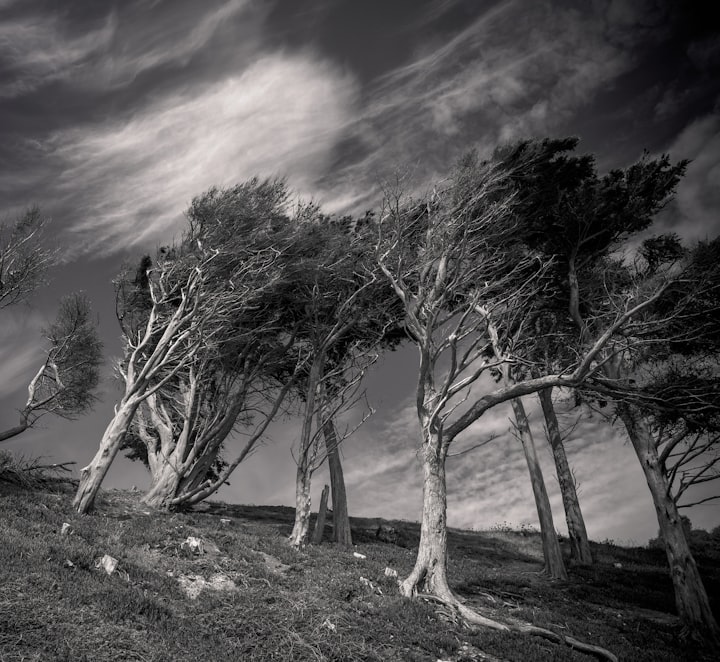Burning Man, Monsoon, and Flooding
An Unlikely Encounter in the Dese

Burning Man, a globally renowned annual event that takes place in the Black Rock Desert of Nevada, is known for its art, self-expression, and radical self-reliance. Attendees from all over the world gather in this barren, arid landscape to create a temporary city that embodies radical inclusion and self-expression. However, amidst the seemingly endless expanse of desert, an unlikely phenomenon occasionally intrudes on this temporary utopia: monsoon rains and flooding. This essay explores the fascinating intersection of Burning Man and monsoon season, shedding light on how the event's principles are tested when the desert transforms into a waterlogged wonderland.
Part 1: Burning Man - A Desert Oasis of Creativity
Before delving into the unexpected interplay between Burning Man and monsoon season, it's essential to understand what Burning Man represents. Conceived in 1986 when Larry Harvey and a group of friends burned an effigy on a San Francisco beach, the event has since grown into a week-long celebration of art, culture, and community. Each year, a temporary city emerges in the Black Rock Desert, known as "Black Rock City," where tens of thousands of participants gather to create a unique experience that challenges societal norms.
One of the core principles of Burning Man is radical self-reliance, where attendees are encouraged to bring everything they need to survive and thrive in a harsh desert environment. Participants must bring their own food, water, shelter, and leave no trace of their presence once the event concludes. The harsh desert conditions, characterized by extreme temperatures and scarce resources, have become an integral part of the Burning Man experience.
Part 2: Monsoon Season in the Desert
Monsoon season in the Black Rock Desert is an anomaly that often surprises Burning Man attendees and challenges their preparedness. While the region is typically associated with arid conditions, the monsoon season, which occurs from late July to early September, brings the potential for torrential rain, thunderstorms, and even flash floods.
Monsoons are characterized by a reversal of wind patterns, which brings moist air from the Gulf of California into the desert, resulting in unpredictable and intense weather events. The Black Rock Desert's clay-like soil, known as "playa," is particularly susceptible to flooding because it does not absorb water well. Instead, water accumulates on the surface, creating a surreal landscape of mud and water.
Part 3: The Clash of Principles
When monsoon season unexpectedly collides with Burning Man, it presents a unique challenge to the event's core principles. Radical self-reliance becomes even more critical as attendees must navigate through muddy and flooded conditions. The temporary city's infrastructure, which is designed for the desert's harsh environment, is put to the test. While the desert's heat can be brutal, waterlogged conditions create a new set of challenges that attendees must face.
Radical Self-Reliance: Participants who are prepared for the desert's arid conditions may find themselves unprepared for the sudden deluge of rain. Shelter becomes a priority as attendees seek refuge from the rain and mud. Those who fail to bring adequate protection may find their Burning Man experience marred by the unanticipated weather.
Leave No Trace: The principle of "Leave No Trace" takes on added significance during monsoon season. The clay-like playa can easily become scarred and damaged by vehicles and foot traffic when wet. Attendees must take extra precautions to minimize their impact on the fragile ecosystem, even in the face of challenging weather conditions.
Immediacy and Self-Expression: Despite the challenges posed by monsoon season, Burning Man attendees often embrace the unexpected. Many art installations and performances adapt to the wet conditions, creating unique and memorable experiences that capture the essence of immediacy and self-expression.
Part 4: Adaptation and Resilience
While monsoon season may challenge Burning Man's principles, it also highlights the adaptability and resilience of the event's participants. Attendees often come together to help those in need, whether it's assisting with stuck vehicles or offering shelter to those caught unprepared. This sense of community and collaboration is at the heart of Burning Man's ethos.
Additionally, some participants choose to embrace the wet conditions as an opportunity for creative expression. Art installations designed to interact with water or mud become unexpected highlights of the event. The monsoon rains may temporarily disrupt the usual flow of Burning Man, but they also give birth to new forms of self-expression and artistic exploration.
Part 5: Environmental Impact and Conservation
The clash between Burning Man and monsoon season also raises important questions about the event's impact on the fragile desert ecosystem. The sudden influx of thousands of people and vehicles can put stress on the playa, especially during wet conditions when the ground is more vulnerable. Organizers and attendees alike must consider the environmental consequences of the event and take steps to minimize its footprint.
Efforts to mitigate the event's environmental impact during monsoon season include implementing stricter vehicle regulations, encouraging attendees to carpool, and providing guidelines for minimizing damage to the playa. These measures aim to strike a balance between the event's principles and the need to protect the delicate desert environment.
Conclusion
Burning Man and monsoon season may seem like an unlikely pairing, but they underscore the event's ability to adapt and thrive in the face of unexpected challenges. The clash between radical self-reliance and the forces of nature highlights the resilience, creativity, and sense of community that define Burning Man.
As attendees navigate the mud and waterlogged playa, they are reminded of the importance of leaving no trace and protecting the fragile desert ecosystem. The intersection of Burning Man and monsoon season serves as a reminder that even in the harshest of environments, human creativity and collaboration can flourish, leaving an indelible mark on both the event and the desert itself
About the Creator
solomon Christian
A first class graduate of mathemathics at the University of Technology lautech.






Comments (1)
There have been many different styles of Burning Man events in our cultured history in the US, but I believe that in its current style, the founders, did not envision it like it is today......just my 2 cents for what its worth. Still, it is quite the event anyways. You may enjoy the following: https://vocal.media/wander/living-below-the-poverty-line Thanks for sharing.